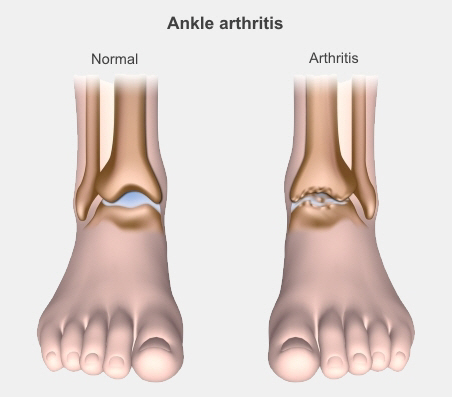ANKLE ARTHRITIS
There are three main types of arthritis affecting the ankle joint
Post-traumatic Arthritis: This is the most common cause of Ankle arthritis. This develops following an ankle fracture, dislocation or any type of injury affecting the normal shape and position of the joint. This causes abnormal mechanics to pass through the joint leading to early wear of the cartilage (the fine lining covering the end of the bone where it joints to a different bone).
Osteoarthritis: Also, called degenerative joint disease, occurs most often in older people. The cartilage wears away with time leading to pain, inflammation and stiffness. In extreme cases, the cartilage can completely wear away, leaving nothing to protect the bones in the joint, causing bone-on-bone contact. The edges of the end of the tibia (shinbone) or talus (ankle bone) may become more prominent and stick out at the end of the joint, this is called an osteophyte or bone spur.

